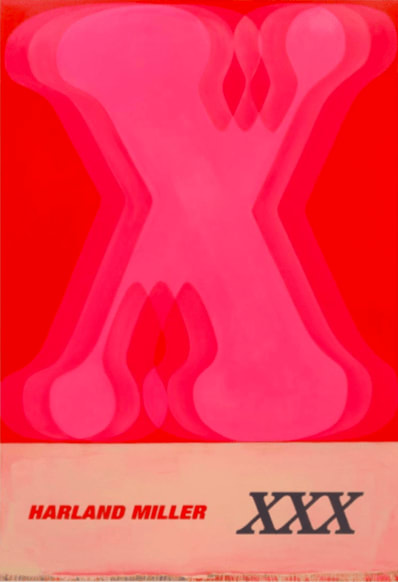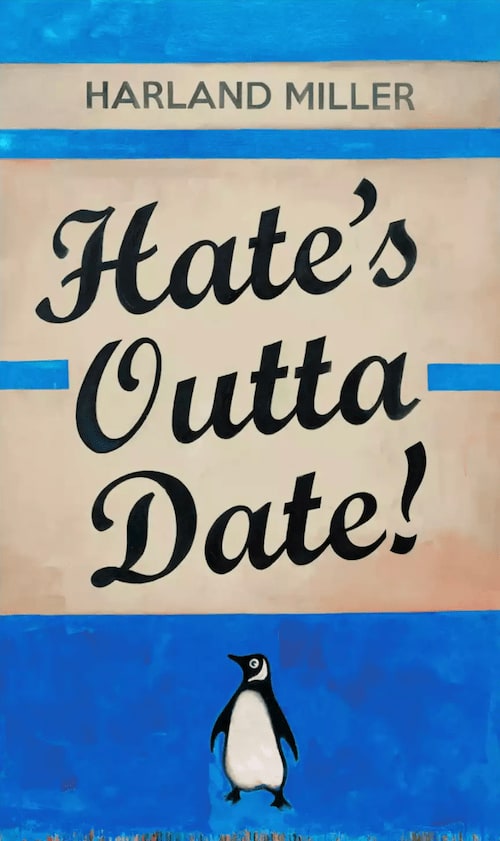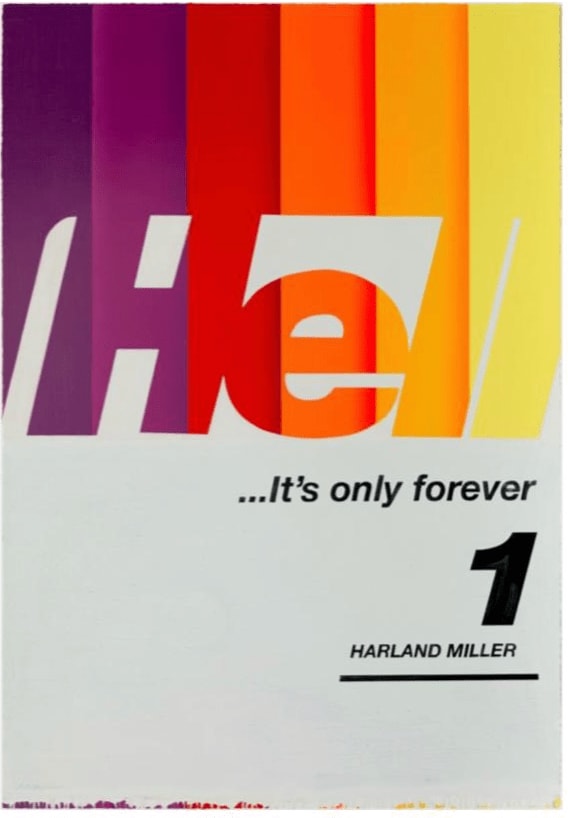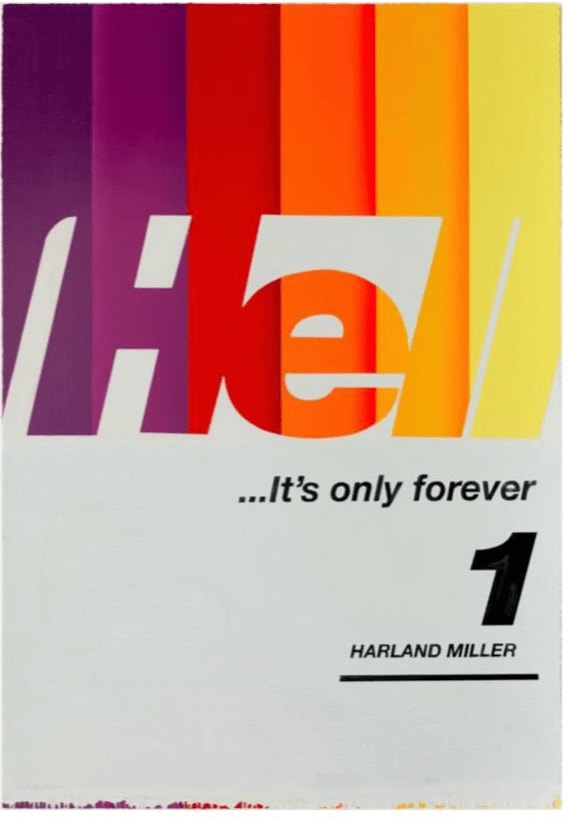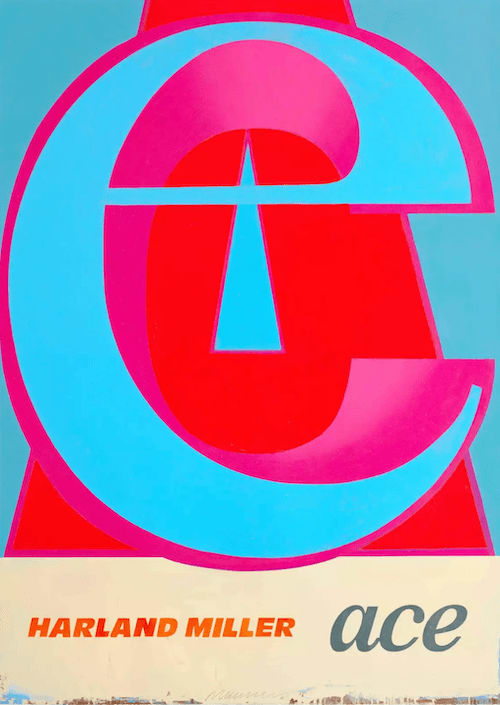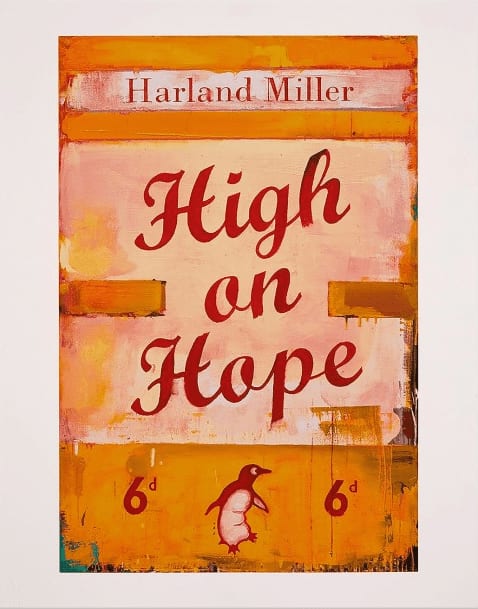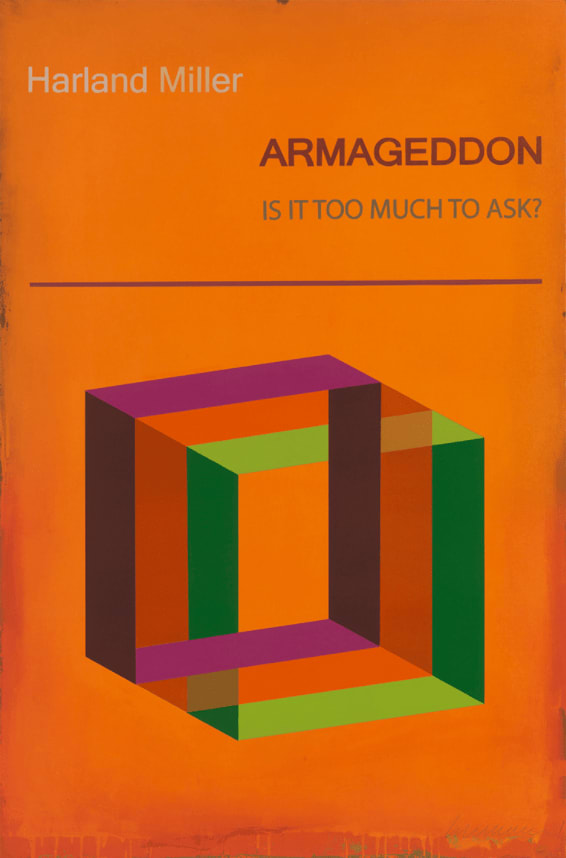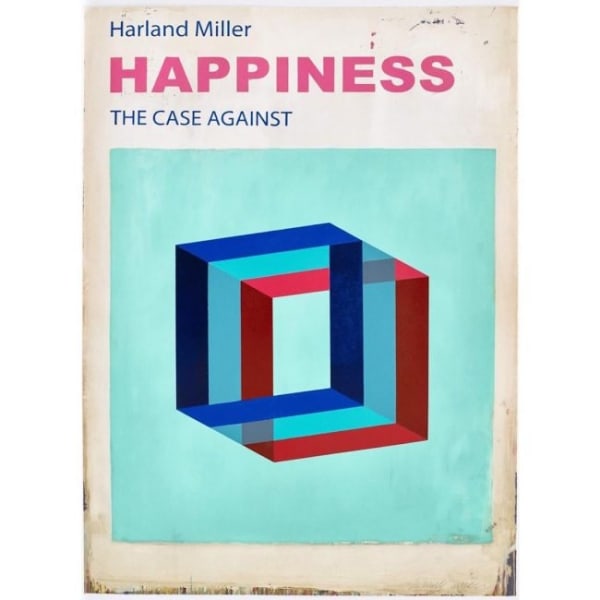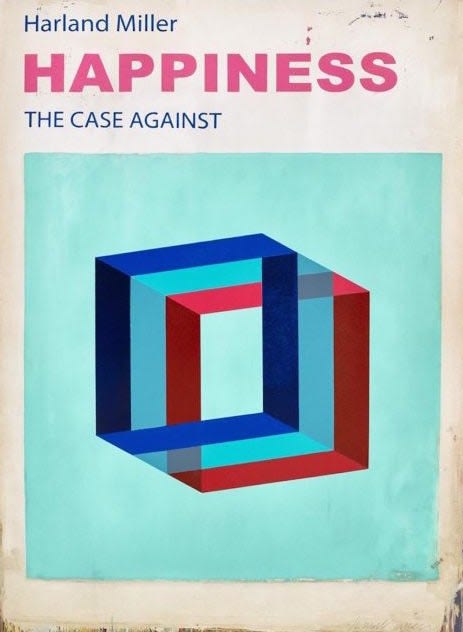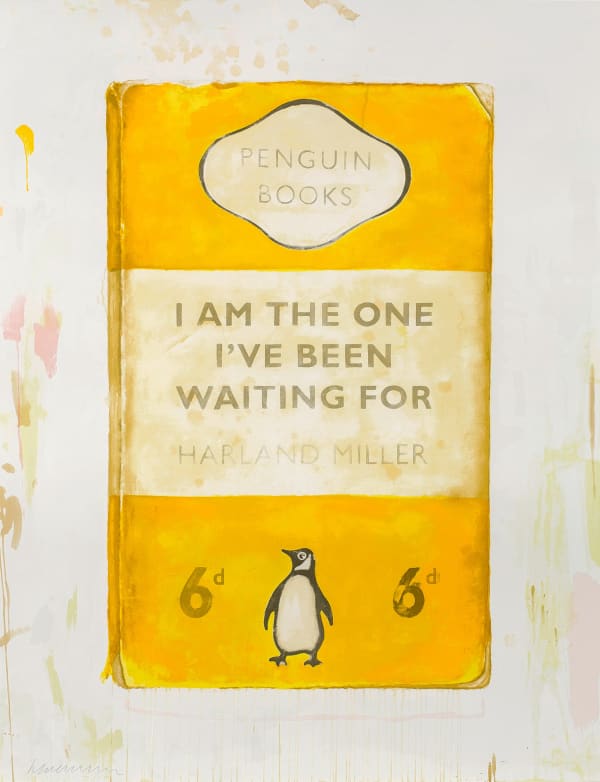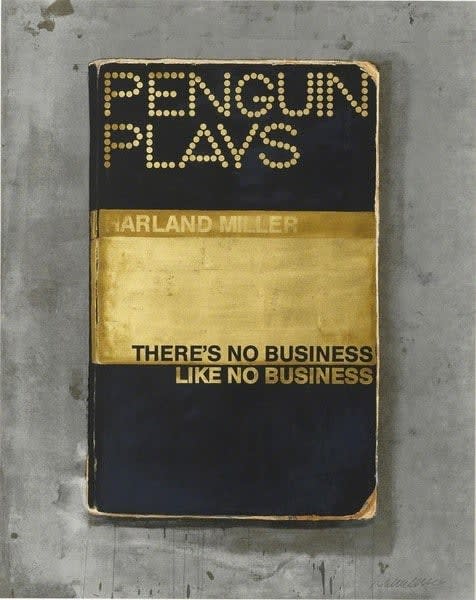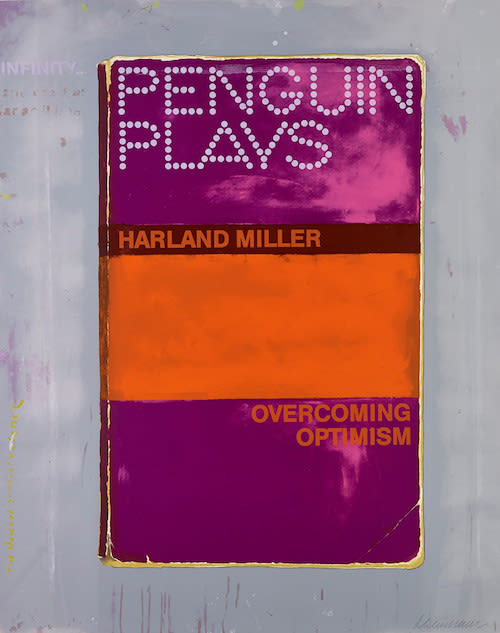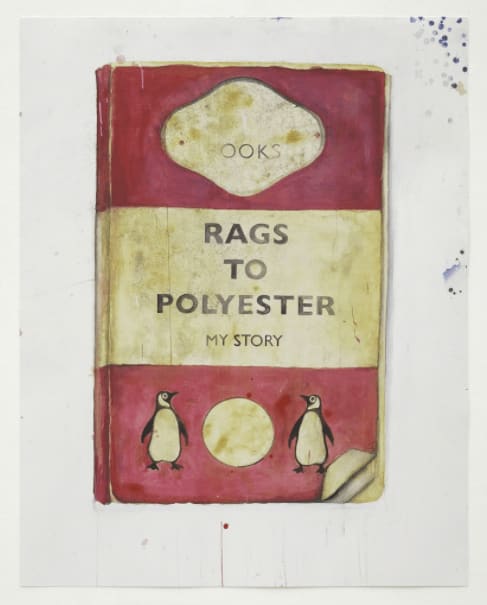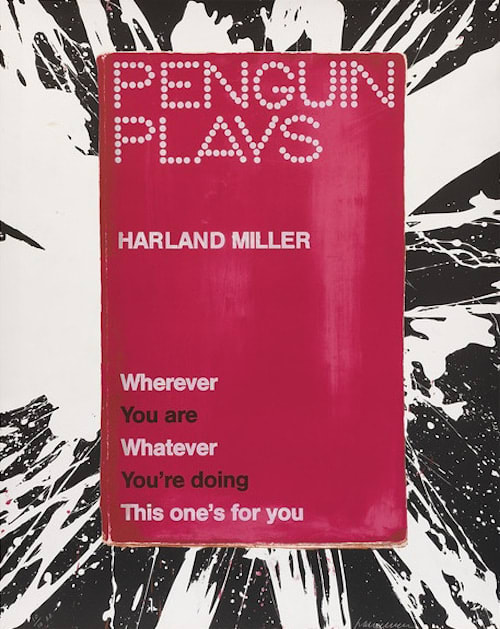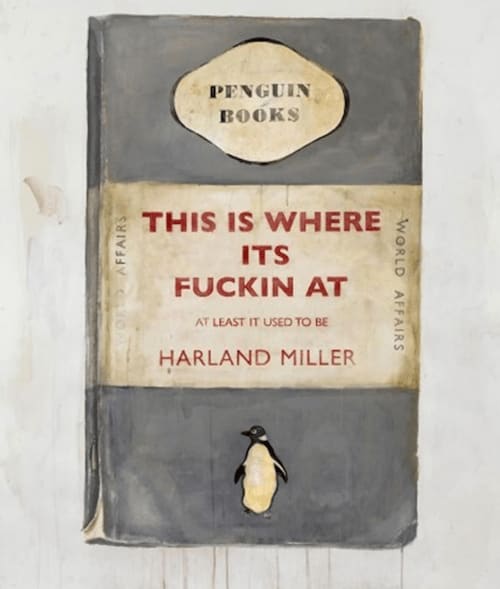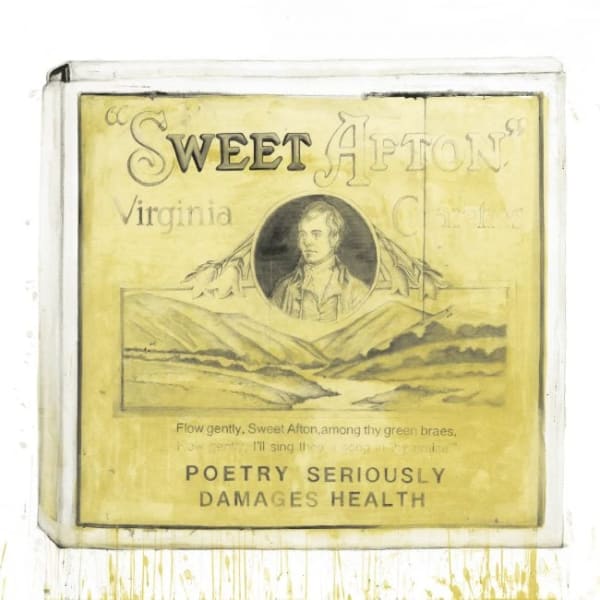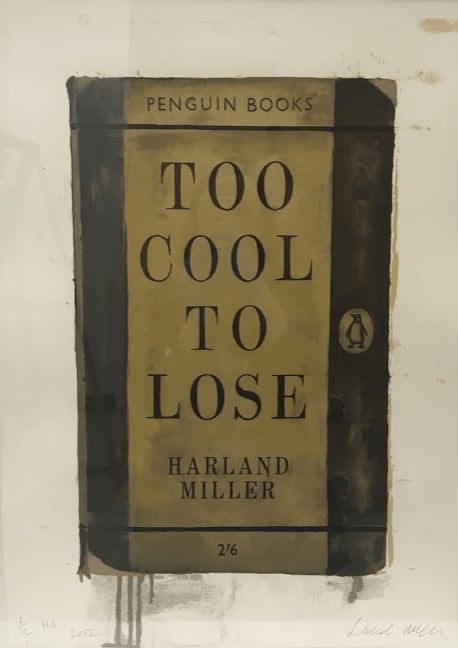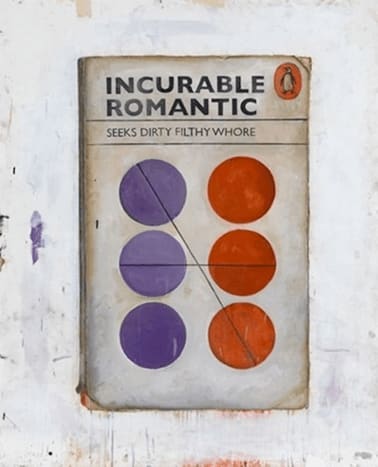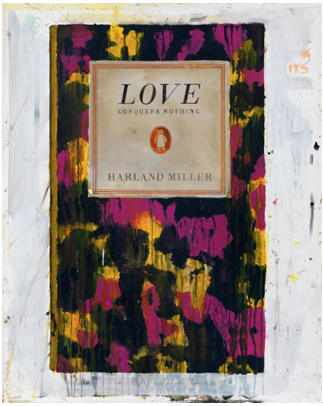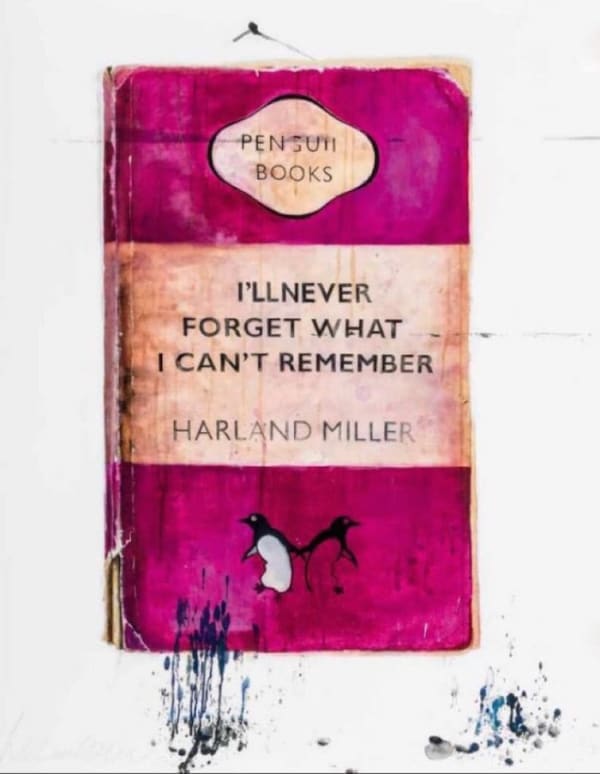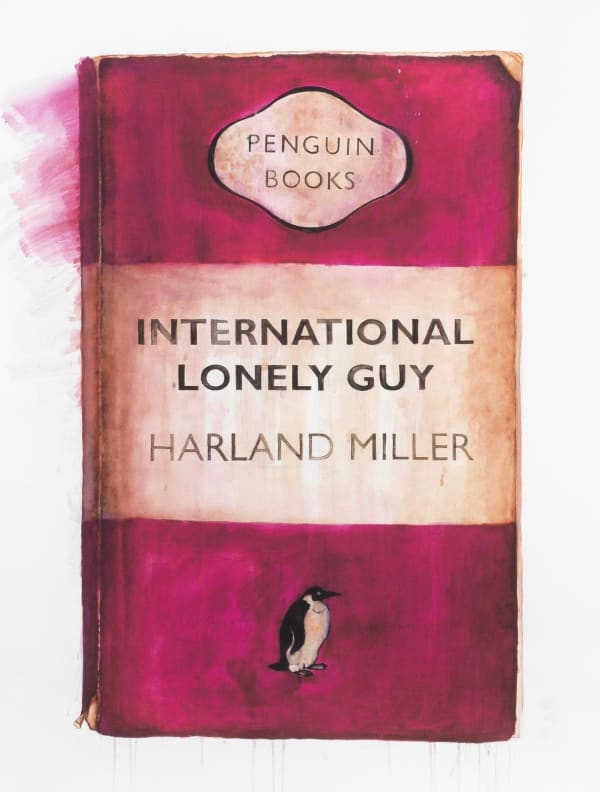-
Overview
“I’m no fan of using ten words when twenty will do”
Harland Miller, born on September 8, 1964, in Yorkshire, England, is a renowned British artist, writer, and satirist known for his striking and thought-provoking paintings, prints, and mixed-media works. Miller's artistic journey has been a testament to his multifaceted talents, blending elements of satire, literature, and visual art to create a unique and captivating body of work.Growing up in Yorkshire, Miller was deeply influenced by the industrial landscapes and cultural backdrop of the region. He developed a passion for art and literature from an early age, inspired by the likes of Edgar Allan Poe, William S. Burroughs, and other literary figures who would later influence his artistic vision.Miller's artistic career took flight during his time at Chelsea School of Art in London, where he explored various artistic styles and forms. His early works showcased a fascination with abstract expressionism before evolving into a signature style characterized by bold, vibrant colors and a striking use of text.One of Miller's most recognizable series of paintings revolves around his reinterpretation of vintage Penguin book covers. He manipulates these iconic book designs, incorporating sardonic and humorous titles of his own creation, often with a satirical edge. These works blend nostalgia with a contemporary twist, inviting viewers to reconsider the relationship between art, literature, and popular culture.Throughout his career, Miller's art has been exhibited extensively across the globe, including prestigious galleries and museums. His works have garnered widespread acclaim for their wit, social commentary, and compelling aesthetic.Beyond his visual artistry, Harland Miller is also an accomplished writer. He has authored novels and essays, showcasing his literary prowess and his ability to seamlessly blend his talents across different creative realms. Miller's writing often reflects themes present in his art, exploring concepts of identity, cultural critique, and the human condition.His contributions to the art world have solidified his place as a contemporary artist of remarkable depth and versatility. Harland Miller's legacy continues to grow, captivating audiences with his bold and thought-provoking artistic expressions that bridge the gap between visual art, literature, and cultural commentary. -
Series
Prints
-
 Luv, 2023
Luv, 2023 -
 XXX, 2023
XXX, 2023 -
 Hate's Outta Date (Blue), 2022
Hate's Outta Date (Blue), 2022 -
 Hate's Outta Date (Yellow), 2022
Hate's Outta Date (Yellow), 2022 -
 Narcissist Seeks Similar (Large), 2021
Narcissist Seeks Similar (Large), 2021 -
 Narcissist Seeks Similar (Small), 2021
Narcissist Seeks Similar (Small), 2021 -
 Hell...It's Only Forever (Large), 2020
Hell...It's Only Forever (Large), 2020 -
 Hell...It's Only Forever (Small), 2020
Hell...It's Only Forever (Small), 2020 -
 Who Cares Wins (Blue), 2020
Who Cares Wins (Blue), 2020 -
 Ace (Large), 2019
Ace (Large), 2019 -
 Ace (Small), 2019
Ace (Small), 2019 -
 High On Hope, 2019
High On Hope, 2019 -
 In Shadows I Boogie , 2019
In Shadows I Boogie , 2019 -
 In Shadows I Boogie , Thought After Filthy Thought, 2019
In Shadows I Boogie , Thought After Filthy Thought, 2019 -
 Thought After Filthy Thought, 2019
Thought After Filthy Thought, 2019 -
 Tonight We Make History P.S. I Can't Be There (Large), 2018
Tonight We Make History P.S. I Can't Be There (Large), 2018 -
 Tonight We Make History P.S. I Can't Be There (Small), 2018
Tonight We Make History P.S. I Can't Be There (Small), 2018 -
 Armageddon: Is It Too Much To Ask? (Large), 2017
Armageddon: Is It Too Much To Ask? (Large), 2017 -
 Armageddon: Is It Too Much To Ask? (Small), 2017
Armageddon: Is It Too Much To Ask? (Small), 2017 -
 Happiness, The Case Against (Large), 2017
Happiness, The Case Against (Large), 2017 -
 Happiness, The Case Against (Small), 2017
Happiness, The Case Against (Small), 2017 -
 Hate's Outta Date, 2017
Hate's Outta Date, 2017 -
 I Am The One I've Been Waiting For (Yellow) , 2016
I Am The One I've Been Waiting For (Yellow) , 2016 -
 Who Cares Wins (Pink) from Artists with Liberty, Save Our Human Rights Act, 2016
Who Cares Wins (Pink) from Artists with Liberty, Save Our Human Rights Act, 2016 -
 I'll Never Forget What I Can't Remember, 2015
I'll Never Forget What I Can't Remember, 2015 -
 On Me Not In Me, 2015
On Me Not In Me, 2015 -
 On Me Not In Me; Health and Safety is Killing Bondage; There's No Business Like No Business, 2015
On Me Not In Me; Health and Safety is Killing Bondage; There's No Business Like No Business, 2015 -
 There’s No Business Like No Business, 2015
There’s No Business Like No Business, 2015 -
 Are You Unhappy Darling, 2014
Are You Unhappy Darling, 2014 -
 High On Hope , 2014
High On Hope , 2014 -
 Love Saves The Day, 2014
Love Saves The Day, 2014 -
 Overcoming Optimism, 2014
Overcoming Optimism, 2014 -
 Rags To Polyester, 2014
Rags To Polyester, 2014 -
 Wherever You Are Whatever You're Doing, 2014
Wherever You Are Whatever You're Doing, 2014 -
 Who Cares Wins (Large), 2014
Who Cares Wins (Large), 2014 -
 Who Cares Wins (Small), 2014
Who Cares Wins (Small), 2014 -
 Blonde But Not Forgotten, 2013
Blonde But Not Forgotten, 2013 -
 The Me I Never Knew, 2013
The Me I Never Knew, 2013 -
 This Is Where It’s Fuckin At, 2013
This Is Where It’s Fuckin At, 2013 -
 This Is Where It’s Fuckin At, 2013
This Is Where It’s Fuckin At, 2013 -
 Heroin: It’s What Your Right Arm’s For, 2012
Heroin: It’s What Your Right Arm’s For, 2012 -
 Five Ring Circus, It's All Fun and Games Until Someone Loses An Eye, 2012
Five Ring Circus, It's All Fun and Games Until Someone Loses An Eye, 2012 -
 I Am The One I've Been Waiting For, 2012
I Am The One I've Been Waiting For, 2012 -
 Love , A Decisive Blow If Against, 2012
Love , A Decisive Blow If Against, 2012 -
 Sweet Afton , 2012
Sweet Afton , 2012 -
 Too Cool To Lose, 2012
Too Cool To Lose, 2012 -
 Death What's In It For Me?, 2011
Death What's In It For Me?, 2011 -
 Fuck Art Let's Dance Set, 2011
Fuck Art Let's Dance Set, 2011 -
 Incurable Romantic, 2011
Incurable Romantic, 2011 -
 Love Conquers Nothing, 2011
Love Conquers Nothing, 2011 -
 You Can Rely On Me I'll Always Let You Down, 2011
You Can Rely On Me I'll Always Let You Down, 2011 -
 I'll Never Forget What I Can't Remember (Pink), 2010
I'll Never Forget What I Can't Remember (Pink), 2010 -
 International Lonely Guy, 2010
International Lonely Guy, 2010 -
 If The Phone Don't Ring, It's Me, 2008-2010
If The Phone Don't Ring, It's Me, 2008-2010 -
 Killing Bondage, 2015
Killing Bondage, 2015
-


